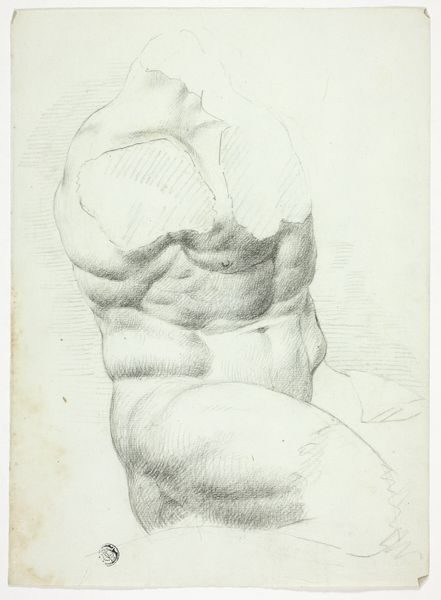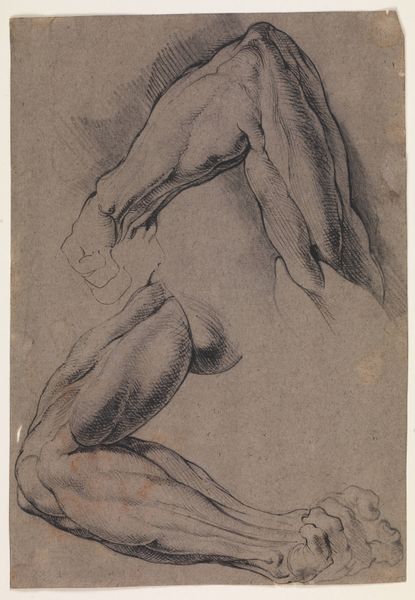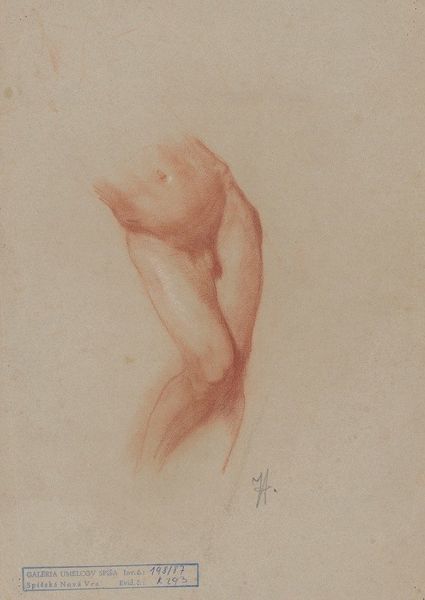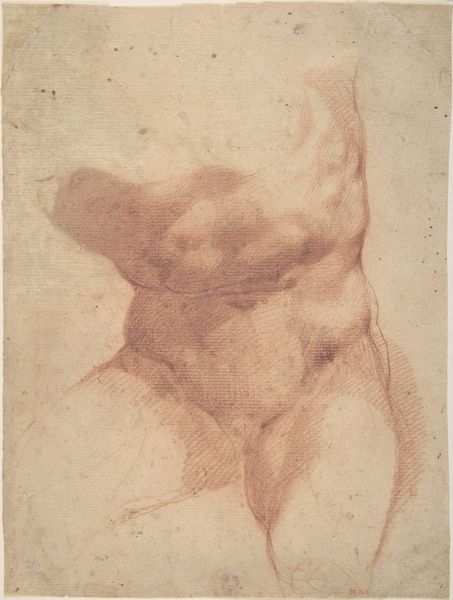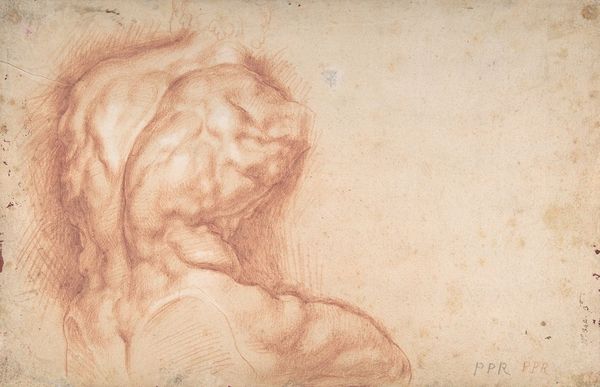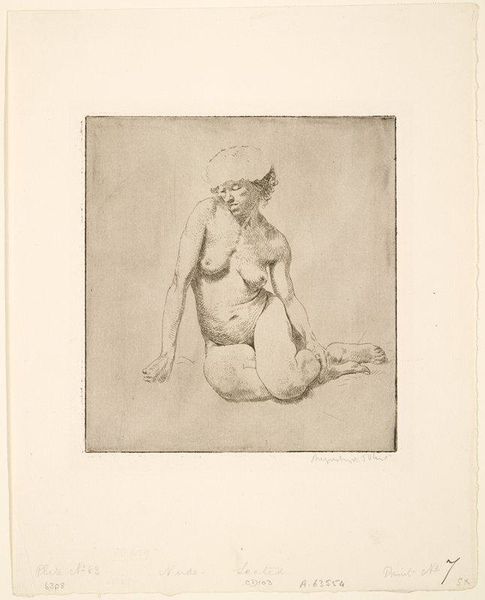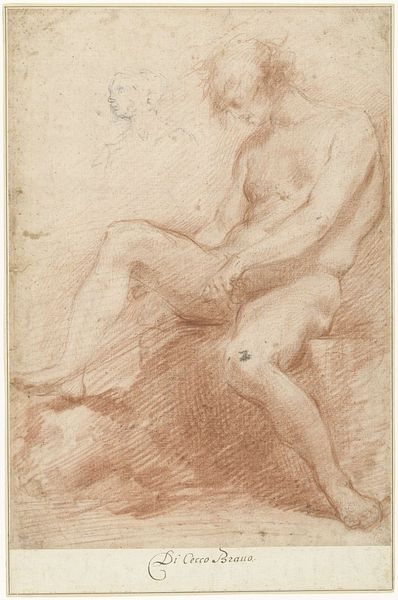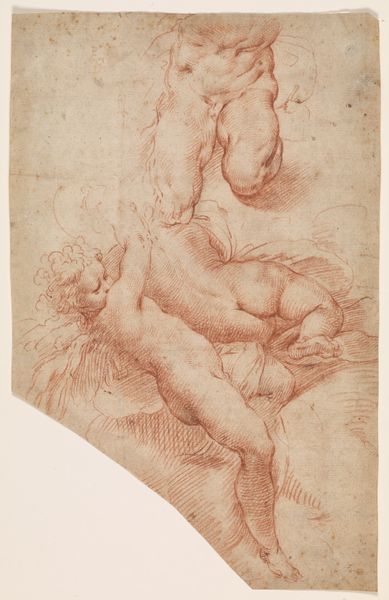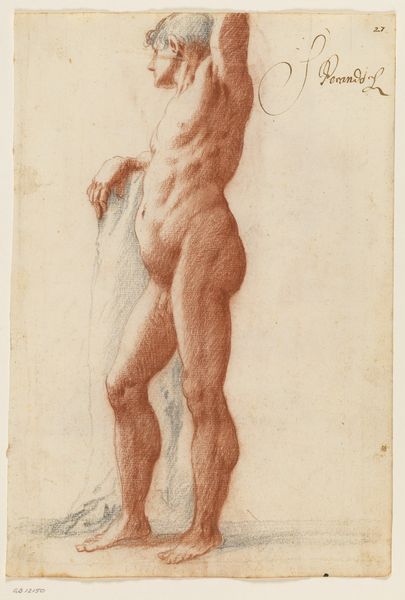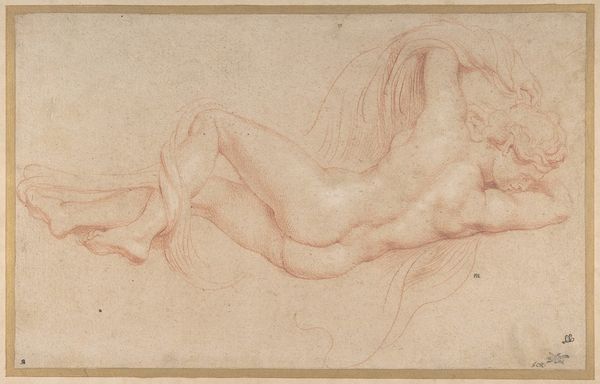
Nymphs and Satyrs Gathering Fruit. Nymph seated in the middle foreground 1628 - 1630
0:00
0:00
drawing, paper, charcoal
#
portrait
#
drawing
#
baroque
#
pencil sketch
#
charcoal drawing
#
figuration
#
paper
#
charcoal art
#
portrait reference
#
pencil drawing
#
portrait drawing
#
charcoal
#
nude
Dimensions: 279 mm (height) x 247 mm (width) (bladmaal)
Curator: This is Willem Panneels' drawing, "Nymphs and Satyrs Gathering Fruit. Nymph seated in the middle foreground," created around 1628 to 1630. It's rendered in charcoal and pencil on paper. Editor: Striking! The weight of the figure, rendered so powerfully in charcoal, gives an overwhelming sense of... earthiness. I immediately think of representations of the female form in the baroque period, and how that links to the perception and treatment of women at the time. Curator: Precisely. Panneels, working in Rubens’s circle, was deeply immersed in workshop practices that valued preliminary sketches like this for larger compositions. The materials—charcoal and pencil—are humble, utilitarian. This wasn't about creating a finished object, but about process, about figuring out the forms and relationships between figures within a scene. We might think of the social status ascribed to ‘drawings’ as subservient to more formal paintings. Editor: It's compelling to consider this through a feminist lens. The facelessness almost emphasizes the subject’s role as a purely physical being, ripe and bountiful, connected to the natural world. How does this feed into existing societal roles ascribed to women, as compared to their male counterparts? Curator: Good point. And the paper itself, its texture and the way the charcoal clings to it, informs the overall impression. There’s an intimacy created by the directness of the medium—no intermediaries, no layers of paint. Editor: It provokes thoughts about power structures, who has control over their image and how easily those images can be used. In our own historical moment, too, we should consider how we depict marginalized bodies, particularly female ones. Curator: Viewing Panneels' drawing reminds us of the importance of looking closely at the means through which art is crafted; it unearths our material culture and helps better appreciate Baroque artistic tradition. Editor: Agreed. This brief look provides so many entry points through which to explore history, production, identity and agency – making the artwork powerfully resonant today.
Comments
No comments
Be the first to comment and join the conversation on the ultimate creative platform.

